Nov. 12, 2008 Spend time at any event where photography enthusiasts congregate and you will notice plenty of naked lenses…lenses without lens hoods. That’s rather strange, when you consider that nearly every quality lens ships with a custom designed lens shade made expressly for that lens. It isn’t a matter of being able to afford a hood; it is nearly impossible to buy a Sony Alpha lens without a matched shade. Most quality glass from other makers also include a hood with their lenses. So all those photographers already own lens shades; they simply don’t bother to use them. Too many photographers treat lens hoods as part of the lens packaging — something to be dropped back into the box and packed away into the closet.
There are certain situations where a lens shade is unnecessary, or even detrimental to making good images. I’ll discuss the specific conditions when you shouldn’t use a lens shade in a moment. First, however, I want to look at why you should attach a hood almost every time you take a lens out of your bag.
Kill the glare, stick a shade on it
Most photographers know that lens shades are intended to exclude glare and reduce hot spots. In addition, lens shades increase contrast, improve sharpness and retain color fidelity. Consider the fact that many photographers spend large sums on top-quality lenses because they know that excellent glass will produce better images. Yet many of these same photographers can’t be bothered to attach a hood, even though that hood is essential to getting the most from that expensive lens.

Lens shades come in a wide variety of shades and designs. The best hoods are designed expressly for the lens they are being used on.
Flare comes in two varieties
There are two kinds of lens flare. The first is obvious flare. It is often referred as ghosting because the appearance is akin to the images the paranormal investigators get excited about. It is characterized by distinct ghostly areas caused by light reflected off the interior of the lens. These reflections are usually visible in the viewfinder, although sometimes you won’t notice the flare until you process images on your computer. Most of the time this type of flare is deadly to your images, because it is nearly impossible to repair the effects of obvious flare.
The other type of flare is more subtle. Instead of a prominent ghostly area, the reflection occurs across all or most of the surface of the lens’ front element. The result is a subtle loss of contrast and color fidelity. You might not even realize that flare has affected your image, because the difference is so delicate. Yet, the difference exists. If you could eliminate the flare, the image would look sharper and richer.
Suppose a respected lab announced that a specific lens had five percent better contrast and sharpness than any other lens in it’s class. That lens would immediately become a highly lusted-after optic. Photographers would speak of it in hushed tones and be willing to spend huge sums of cash for the privilege of saying they shoot with that lens.
Yet, although we know that use of a lens shade can dramatically improve our photos, many photographers can’t be bothered to use one. Spend hundreds of dollars on a lens that provides sharper images with better color? Of course. Spend ten seconds to attach a lens hood to improve sharpness and color? Sorry, just can’t spare the time.
Hopefully, you already use a hood whenever applicable. What if your original hood is lost or broken? You have several options. If the lens is still in production, you can always order a new one from the manufacturer. This is often the best route, because you know the hood will be matched to the lens. Unfortunately, original replacement hoods don’t come cheap. In some cases, the list price of an original equipment hood might be twenty percent as much as a complete new lens — a fairly high sticker for a plastic cylinder or stamped piece of aluminum.
I lost my hood, now what?
You could look for a used hood on one of the online auction websites, but if the hood is for a popular lens, you may find it difficult to secure a second hand lens shade. That narrows your choice to one of the many aftermarket hoods available. Unfortunately, one size of hood definitely doesn’t fit all focal lengths. A longer shade will be more effective, but long hoods cannot be used with wide angle lenses because the hood will cause vignetting. Zoom lenses can be even more problematic, since it may be difficult to find a generic hood that offers sufficient sun protection without vignetting at all focal lengths.
Aftermarket hoods are available in metal, plastic and flexible rubber. A generic hood may not be as fully effective as one specially tailored to a specific lens, but the aftermarket shades are much more affordable.
One final source of replacement hoods are printable hoods that can be downloaded from the internet. Type “printable lens hoods” into your favorite search engine and you will find dozens of paper hoods designed expressly for a wide variety of lenses. Print them on stiff card stock, cut them out and attach them to your lens.
So when should you forgo a lens hood? There are times you might want to introduce lens flare as a creative element. Hollywood movies often go out of the way to show flare effects in establishing shots. You may want to include this technique in your own portfolio.
When shooting flash, use a hood with care
Finally, use care when using a lens shade with electronic flash. Lens hoods can block the light from a hot-shoe mounted flash unit or a built in popup flash. Generally this isn’t a problem with longer focal length lenses, but with a wide angle lenses, there is a real possibility that the shade will cause a dark shadow at the bottom of the frame. It is a good idea to check how your wide angle lens hoods perform with hot-shoe mounted flash units.
So do use your lens shade? Why or why not?
Technorati Tags:
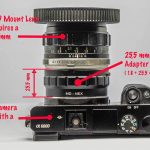

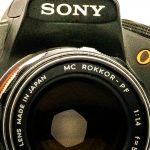


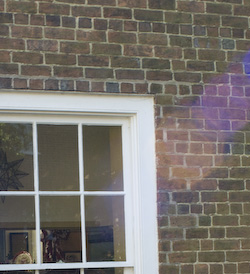
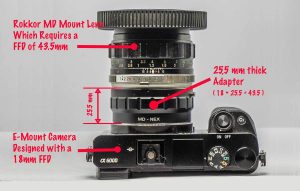
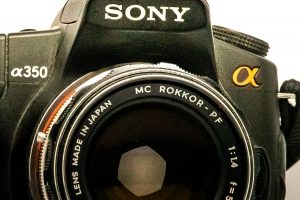



Great articles Tom. Keep ’em coming!
I use my lens hoods nearly 100% of the time. Occasionally I’ll leave it off in a low light situation believing, probably erroneously, that more light will get through to the sensor. Do you know if in such a low light situation that leaving the hood off, particularly on a long zoom lens with a big hood, makes a difference?
I was reminded of one other reason to use the hood this past weekend while shooting a swim meet. The hood can serve to protect the front of the lens. If you’ve ever been on deck at a swim meet you know how treacherous that wet deck can be. I slipped a little bit, and while trying to regain my balance my camera swung away from me and right into the wall. Thanks to the hood, I probably saved the lens. Amazingly the metal hood survived as well.
very useful 🙂
I enjoyed your easy to understand explanation of why hoods are important.
Here’s a link I’ve found useful before, in case you or a friend has lost or broken a hood.
You can go there, download a pdf for the lens hood you require and use it as a stencil to cut some plastic sheet or cardboard for a DIY hood.
http://www.lenshoods.co.uk/
Pete thanks for your comment and link. I knew about lenshoods.co.uk, but I didn’t mention it directly because I couldn’t find a single Sony or Minolta lens mentioned on the site. I’m sure you could modify some of the templates to work on a Sony lens, but the point of having one of these paper hoods is that it should match the OEM hood.
Maybe we need to start a write-in campaign to get them to add Sony/Minolta lens hood templates. Or, if anyone wants to make up some Sony/Minolta hood templates using existing OEM hoods as a master, I would be glad to host them here for downloading. Anyone game?
Have a great thanksgiving!
I once believed that a lens that had a hood supplied with it because the manufacturer did a poor job of managing reflected unfocused light inside the lens.
Then I bought a 500mm mirror lens and was VERY dissapointed with it. The images were lousy – colors were flat and the image looked like it was taken in a fog. I already had a old 400mm lens that takes much better images, but still a little foggy and flat.
Then I read about “unfocused light” inside the lens and had an idea. I took an 8″ piece of black PVC pipe and a dryer vent hose clamp and used the pipe as a lens hood with the clamp to hold it on the lens. I then used a wire brush on a drill to score the inside of the pipe because it was shinny. I used a hacksaw to cut slots in the lens end of the PVC pipe so the clamp would be able to compress the pipe enough to clamp on the end of the lens. Both lenses take 72mm lens caps so they were almost the same size in outside diameter. (I know, more than you ever wanted to know)
Then I took some pictures with and without this arrangement. WOW!!!! What a difference it made with the “hood” on. The image quality using the 500mm mirror lens was leaps and bounds better than without it. The image quality using the 400mm lens was also very significantly improved.
The end result of this is that now I have to find the lens hoods that came with my new lenses. It’s not really that many lenses though. Being a tinkerer and cheapskate I have purchased most of my lenses used.
THANK YOU very much for the tip about making my own lens hoods. I already purchased some black construction paper to use so having actual designs to use is fantastic.
Aw, this was a quite good quality submit. In theory I’d love to compose like this also – taking time and genuine effort in making a perfect article… but what can I say..
. I procrastinate alot and by no means appear to acquire something carried out.
This is awesome!! Finally got the correct info…
Hey Blogger,When you write some blog and share with us,that is a hard work for you but share makes you happly right? good luck and cheers!
Cool, I am quite interested in your site. If I were to use this website, I could earn you 200-1000 USD daily. I am willing to work on monetizing your site, on the condition that you share 50% of revenues with me. If you are interested, please send me an email. 😀
i have checked this blog a couple of times now and i have to say that i find it quite exeptional actually. it’ll be nice to read more in the future! :p